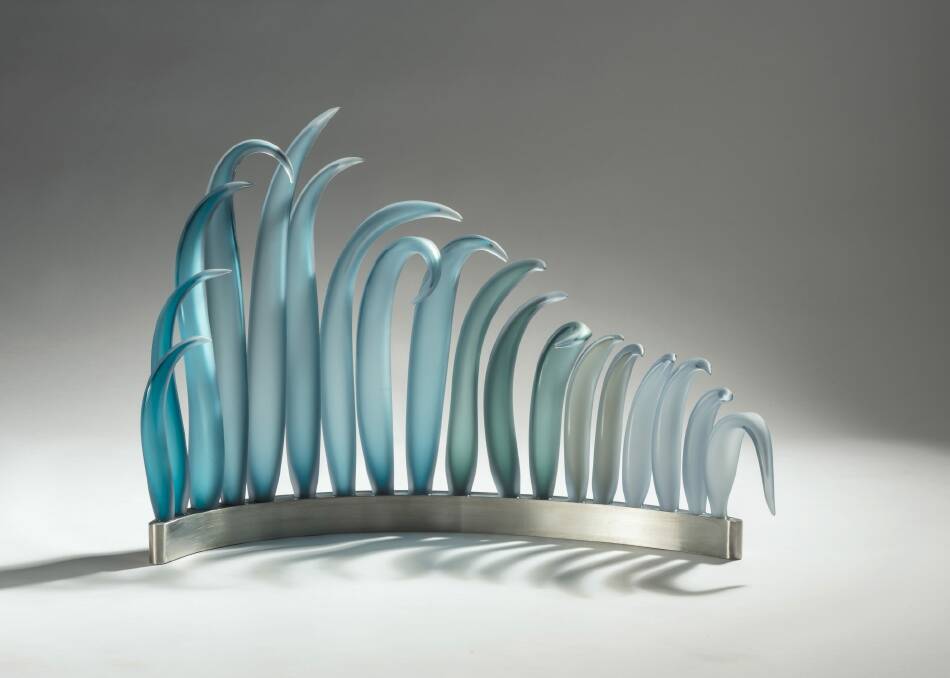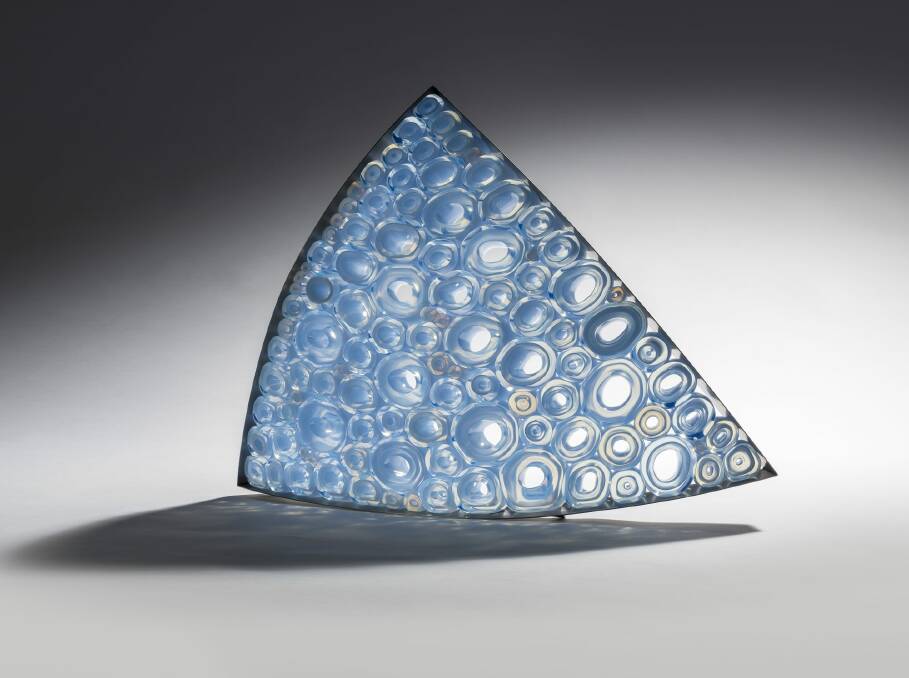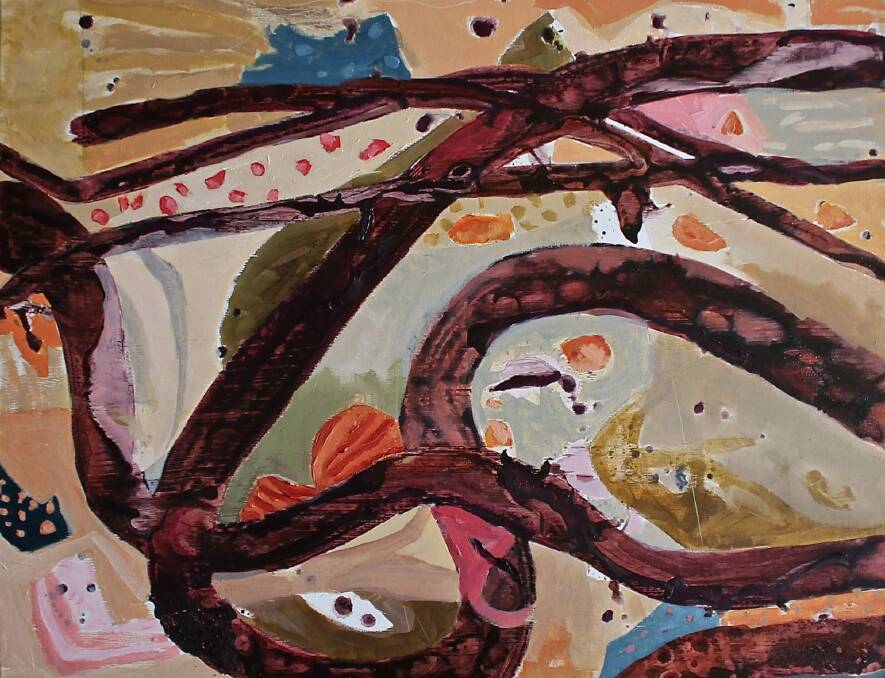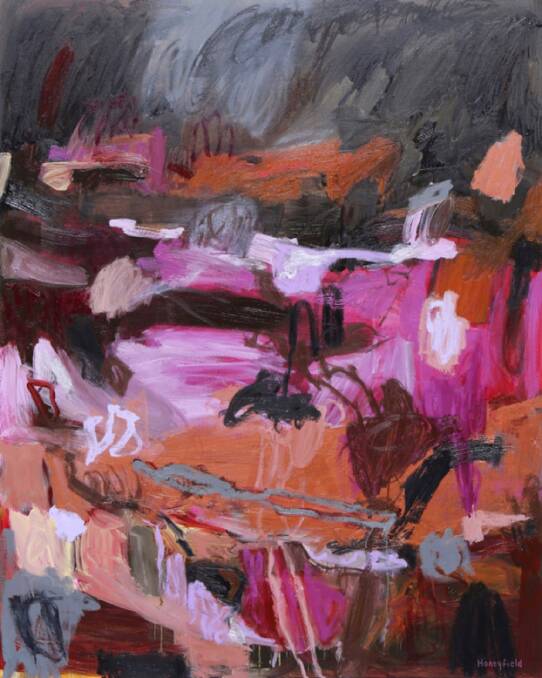Interconnected: work by Matthew Curtis, Mel George, Meagan Jacobs, Jo Hollier, Pamela Honeyfield and Harriet Schwarzrock. Form Studio and Gallery, Queanbeyan. Until March 7.
Subscribe now for unlimited access.
or signup to continue reading

Reviewer: Kerry-Anne Cousins.
The director of Form Studio and Gallery, Claire Primrose, is developing a significant program of exhibitions at this small gallery in Queanbeyan. An artist herself, she brings her artist's eye to this judicious selection of glass, painting and printmaking.

The exhibition is titled Interconnected and underlines not only the connection between the artists, their inspiration and means of expression but also the unexpected connections that can occur between artists who work in very different media.
Mel George has returned to Canberra after several years working in the US at Portland, Oregon. On her return home her work concerned the transition between these two locations – a sort of introspective meditation on loss and gain. Postcards and Polaroid photographs provided the format size (15x11 centimetres) for her small wall panels of kiln-fused glass. The small wall panels in this exhibition (The conversation series 1-9) suggest the intimacy and feeling of connection that can arise between people during moments of conversation. The geometric abstract patterns and colour hint at objects - such as an Iced VoVo biscuit and a fried egg - but this remains no more than a tantalising suggestion. The two larger panels (28x28 centimetres ) are in fact more helpfully titled meat and three veg and chook and three veg! George's panels are explorations of the power of colour and pattern to evoke a mood, a moment of intimacy hostage to the passing of time.
Pamela Honeyfield is a Sydney-based artist. Her abstract expressionistic works are based on the artist's own reaction to and experience of landscapes. Honeyfield covers her canvas with large free-flowing brushstrokes working back into each layer creating fields of heightened colour. These flowing areas like clouds blend and drift on the surface of the work. Line is used as a device to cut across and anchor these floating surfaces. Honeyfield notes that she regards her paintings as being open-ended as opposed to "closed" works. The artist's emphasis on immersion in the actual experience of painting means her work becomes a very personal encounter with the medium that may not engage every viewer.
Meagan Jacobs is from the South Coast of NSW. Her earlier work is notable for its colourful decorative and graphic element. In this exhibition Jacob's paintings of the Australian landscape also demonstrate her skill with colour, texture and line with an intuitive feeling for the gestural mark that is beautifully orchestrated - emotive but controlled. The interweaving of the flowing forms hint at many interpretations – rivers and twisted tree trunks and also perhaps the presence of the Rainbow Serpent from the Dreamtime. What however is also reflected is a more direct connection to a sense of place and it is this verisimilitude that gives these works a new grittiness and assurance that impresses.

Jo Hollier is a Canberra printmaker based at Strathnairn Arts. Hollier's recent exhibition Transfer at the Belconnen Arts Centre (September 2015) demonstrated her mastery of the many aspects of printmaking. In this current collection of prints, Hollier has taken her inspiration from the natural world choosing "treescapes", flora, insects and birds as her subjects. Some of the prints are familiar, but Understory is a reworking as a three-part panel of one of my favourite of the artist's lino block prints of the under canopy of tall young trees. Two etchings, Banksia and Acacia, are good examples of Hollier's ability to depict with accuracy native fauna and flora yet retain the ability to suggest the life force within.
Hollier's lino print Bracken and Entomology is a nice entrée into the work of Canberra glass artist Harriet Schwarzrock whose work Fluid is placed adjacent to Hollier's work in the exhibition. In her image Hollier sees visual connections between the branching legs of insects and the branching, curling fronds of bracken. Harriet Schwarzrock's sculptures of curling frond-like glass continues the analogy. These coloured glass fronds suggest the respiratory system of plants and the interconnectivity of all life. In two works, Fluid and Still, the glass fronds wave gently to spell out letters of their titles. The accompanying work Swell is a beautiful study of the movement of a wave with a row of gently waving forms increasing and decreasing in size and colour as they appear to move along their plinth. In 2014 Schwarzrock won the object section of the Waterhouse Natural Science Prize with her work Breathe that relates to this innovative and significant body of work.

Canberra glass artist Matthew Curtis has developed a highly sophisticated and skilled approach to glassmaking. Interested in minimalist modern architecture at the large end of the scale, he has also turned his focus to the microscopic cellular structure of plants. Blue and Olive Xylem is a work that exemplifies these two areas of interest. Architectural in form, its wall-like structure is constructed from regular cellular units whose interior cavities use light and the transparency of the glass to create a changing field of colour. The three other works by Curtis in the exhibition are from a new body of work, some of which was made while Curtis was the inaugural artist-in-residence at the Canberra Glassworks. These works - Neodymium and Uranium Section, Neodymium, Aqua and Uranium Section, and Glacial Blue Section - are also based on the cellular structure of plants but are more sculptural and organic in concept. In contrast to the regular structure of the Xylem series the multi-sized oval glass forms in these works are fused in irregular formations of "cells" not unlike the interior of a beehive and held together by a metal frame. Noteworthy for the intensity of their coloured jewel-like colour that plays over their surfaces they suggest a new and exciting direction for the artist's work. They are really quite magical.

